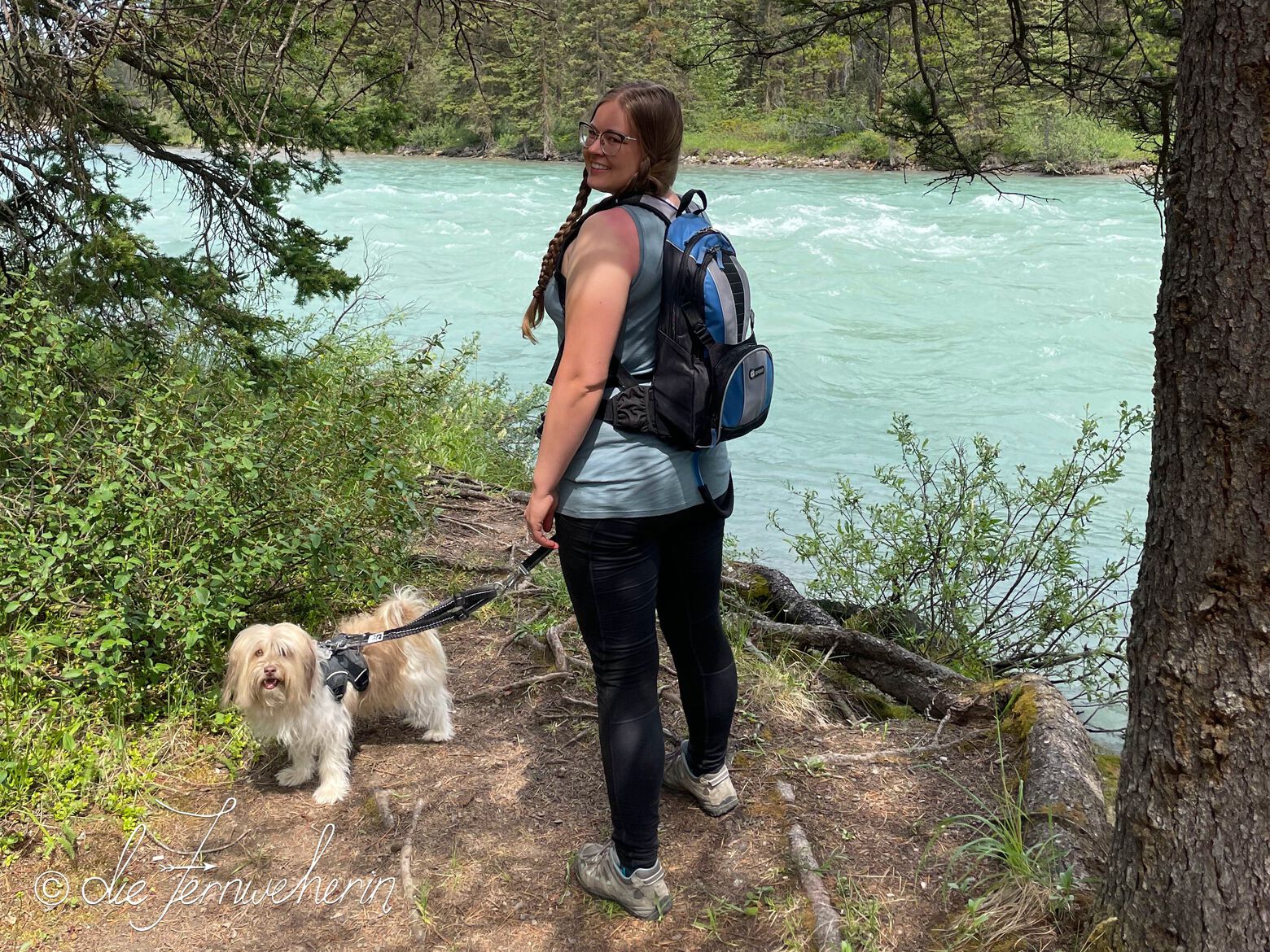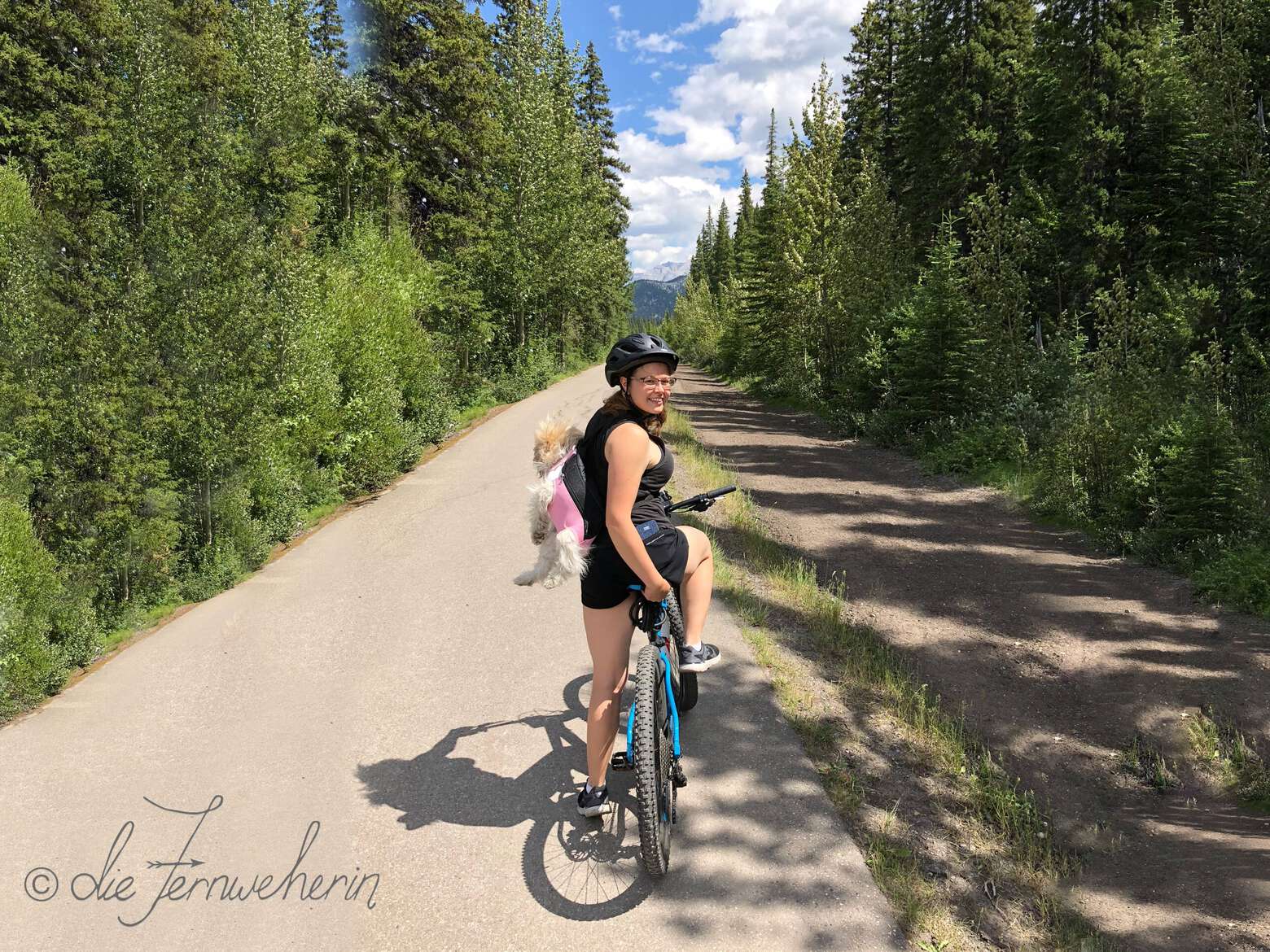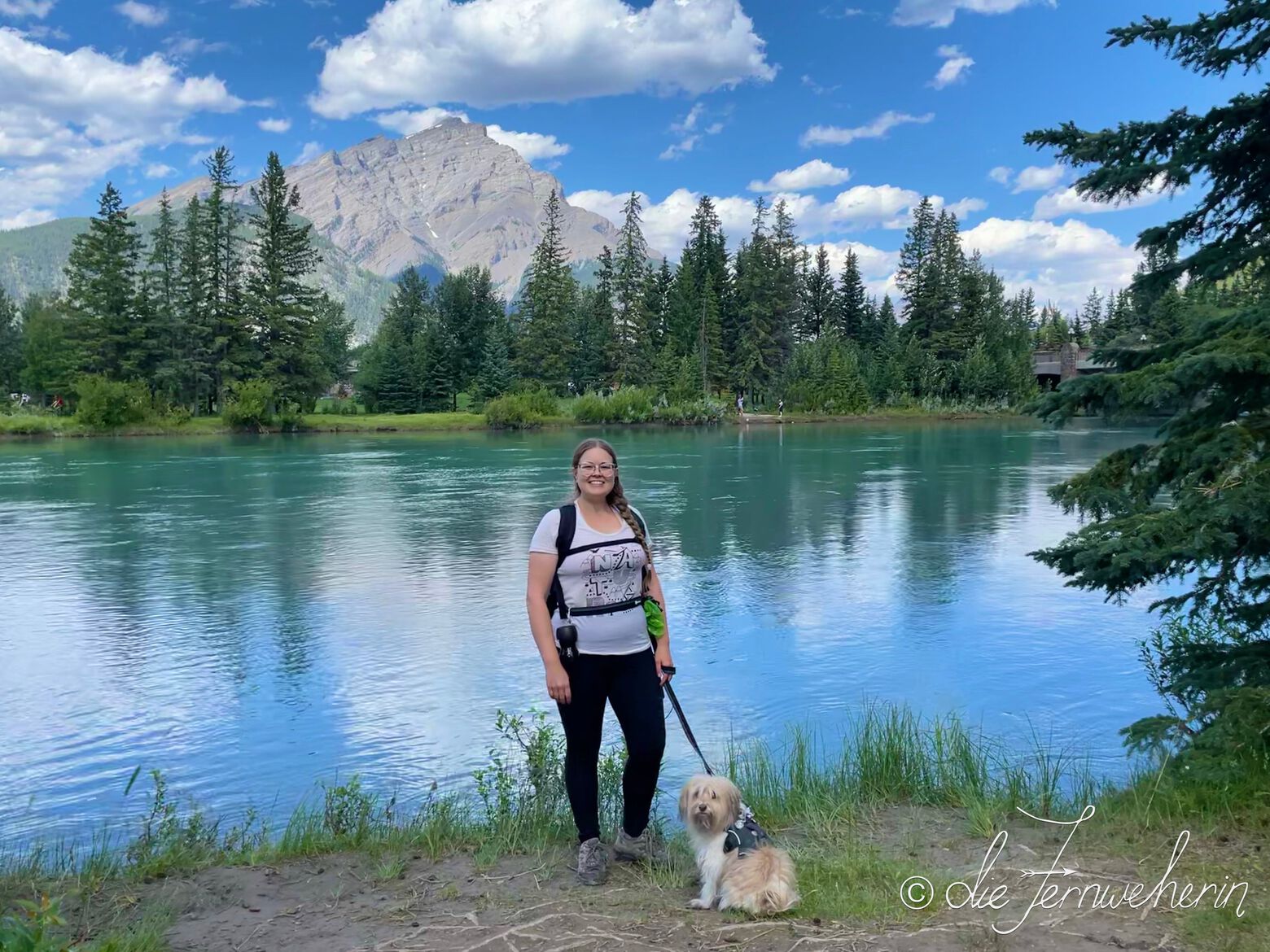Hiking is a great way to take in Banff’s many natural wonders, from awe-inspiring glaciers to vibrant blue lakes to handsome forests. It’s also a great way to get some exercise while enjoying panoramic mountain views! However, like any outdoor pursuit, hiking carries its share of risks, from injury to exposure to wildlife encounters. It’s important to remember that when hiking in Banff National Park, you are responsible for your own safety.
The “Cole’s Notes”: Always be well-prepared when setting out, and choose a trail that is suitable for both your level of experience & of fitness. If you are hiking as a family or group of friends, choose a trail suitable for the least fit/experienced member of your group. For more detailed advice, continue reading.
pin this post!
Contents
Safety first
Make sure that you check Parks Canada’s list of warnings & closures, the trail conditions, and the weather report before hiking to ensure that it is safe to do so. Prior to setting out, tell at least one reliable friend or family member where you are heading, when you expect to be back, and who to notify if you do not return (Banff Dispatch at +1-403-762-1470). If you’re hiking in the winter—or even in shoulder season, as high altitude trails are often snow-covered from September to June—check whether or not you will be passing through any avalanche-prone areas, and make sure that you have the training and equipment necessary; if you don’t, or if the avalanche danger is severe, then do not attempt the hike, and choose a different trail instead.
<< contents
Be prepared

Always bring essential supplies along with you. This includes, but is not necessarily limited to:
- bear spray (even in the winter)
- sunscreen (ditto)
- a first aid kit
- navigation supplies (such as physical map & compass or a downloaded map on your phone & a backup power supply)
- optional equipment such as a headlamp, hiking poles, helmet, and crampons
- an emergency stash of food (such as energy bars, trail mix, jerky, or dehydrated meals)
& water (more on this to follow!)
<< contents
Stay hydrated
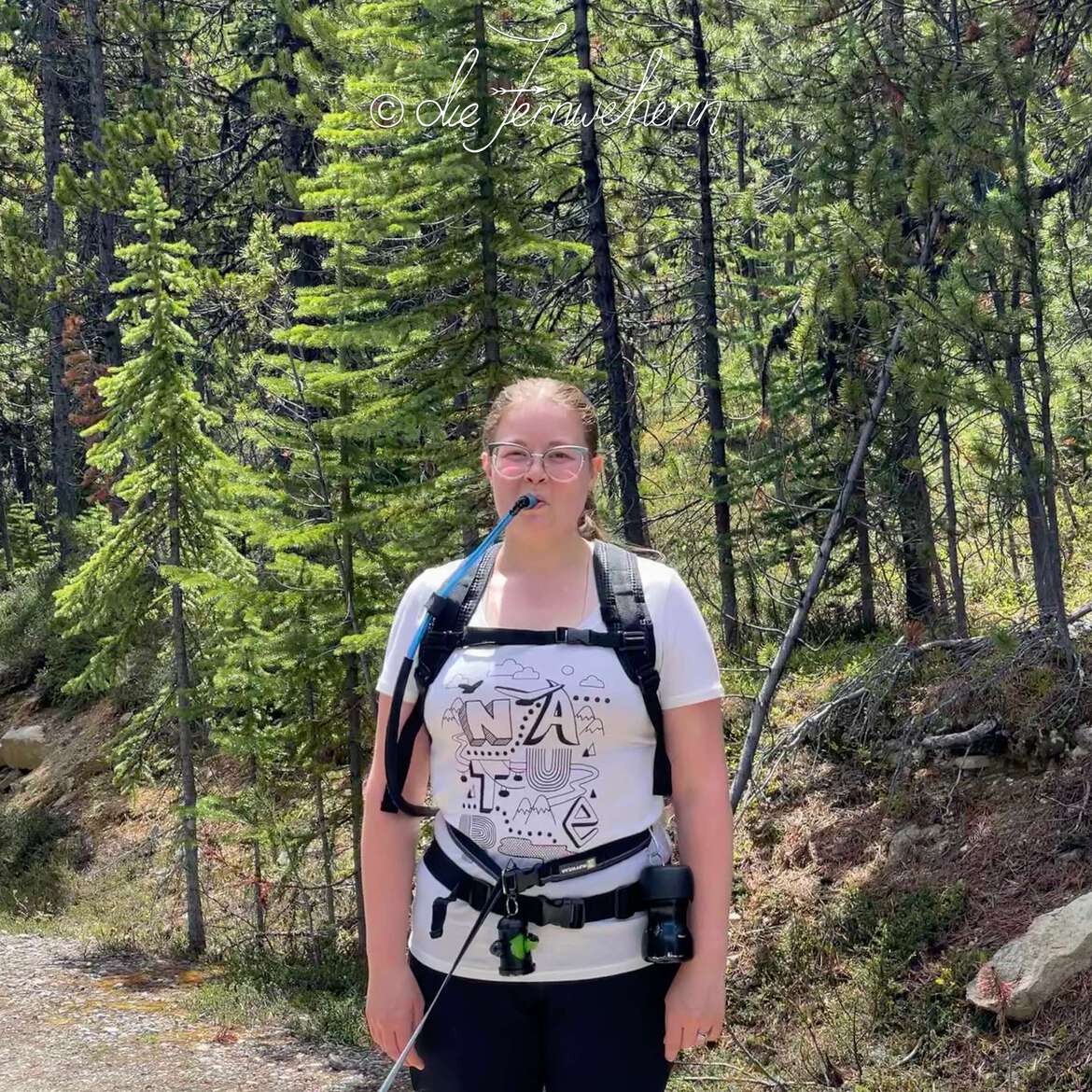
You do not want to run out of water at any point during a hike—trust me, I speak from experience. A good rule of thumb is to bring along 0.5L of water for every hour you plan on being gone, but if it is a hot day and/or if you will be exerting yourself, you may even need to double this amount. I personally swear by my 3L hydration reservoir (I call it my “gerbil pack”), and take along extra water in bottles as needed. I also carry a LifeStraw, which is a good emergency option as it allows me to safely drink from water sources along the way if my stores run out.
<< contents
Dress for success
Proper clothing and footwear make a world of difference when hiking, especially in the mountains where the variability of conditions is amplified by changes in elevation. When choosing what to wear, especially if you are going to be hiking for longer than a couple hours, remember the cardinal rule: be an onion—aka, layer up! Pick a moisture-wicking base layer (such as merino wool), an insulating mid layer (fleece or down), and a weatherproof outer layer (such as GoreTex).
Regarding footwear, you don’t necessarily need to purchase full-on hiking boots—although I certainly recommend them—but make sure that you choose something supportive (no flip-flops!). And, of course, everything that you are wearing should be weather-appropriate.
For more details and recommendations regarding specific brands, stay tuned for a future post.
<< contents
Be bear aware
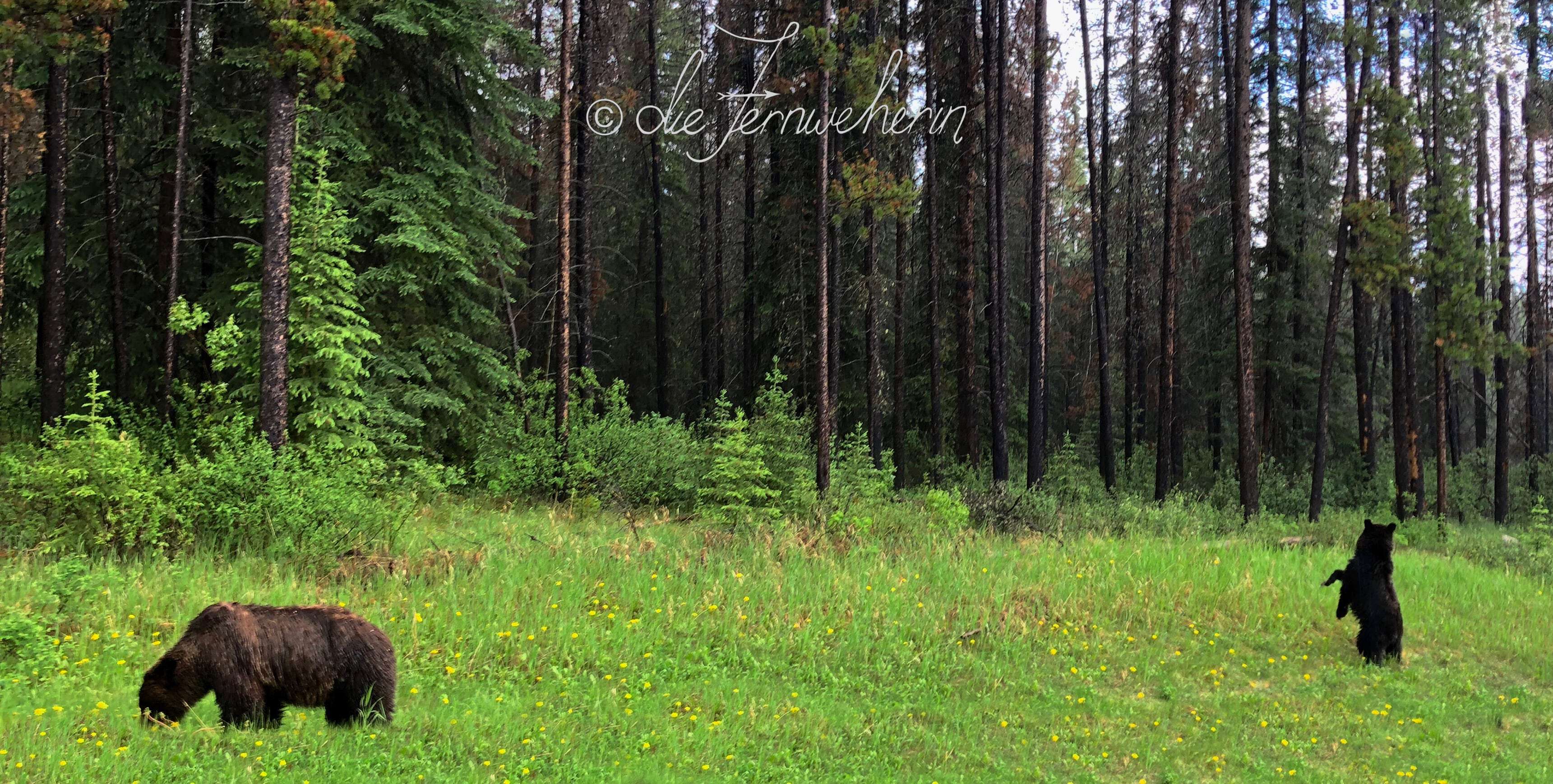
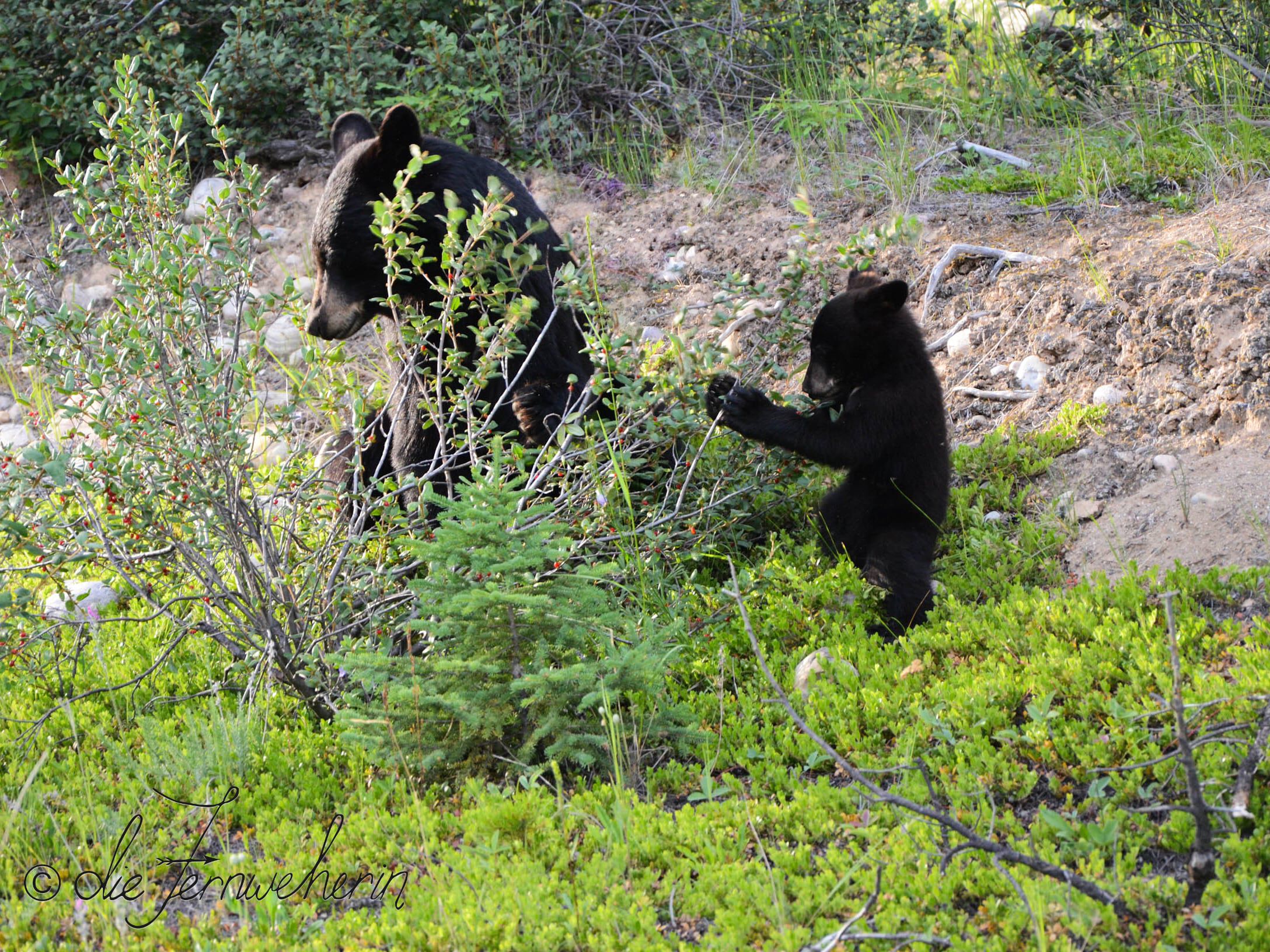
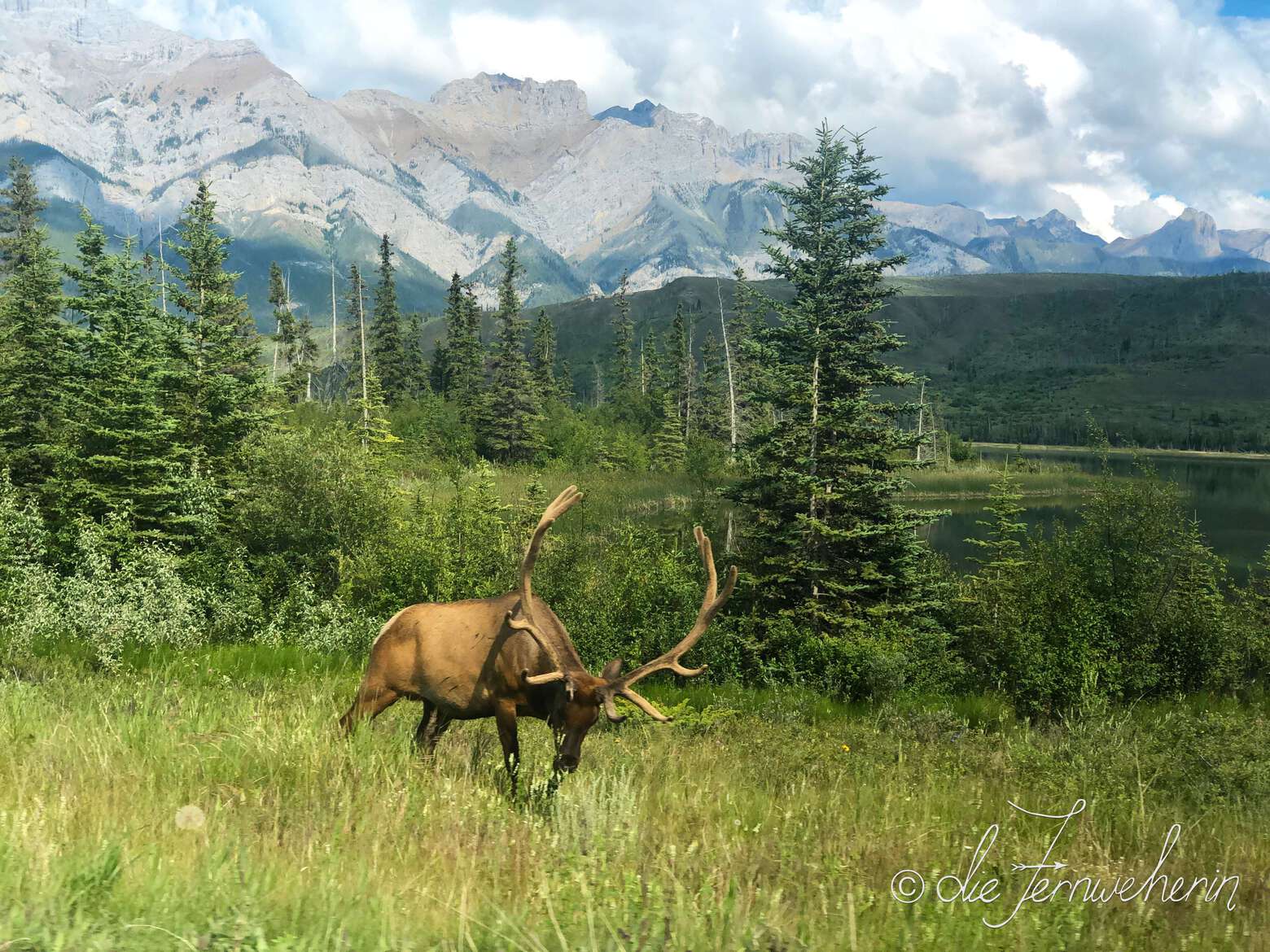
Banff is bear country, and bears have been seen even on the heavily trafficked trails close to town. Always carry bear spray (available for purchase or rent from many retail outlets in the town of Banff, including the Banff Visitor Centre), and make sure that it is easily accessible—i.e., not at the bottom of your backpack. Stay aware throughout your hike, avoid wearing headphones or earbuds, and be extra cautious when travelling around blind corners or through areas surrounded by bushes, especially during late summer/early fall, when berries are in season. Make noise while hiking, either by travelling in tight-knit groups of four to six and keeping up a lively conversation, or by using some sort of device such as a portable speaker (“bear bells”, however, are ineffective).
Of course, bears are not the only animals that you might encounter along a trail. Many different species call Banff National Park home, and all deserve to be treated with respect. This means keeping your distance, having dogs on a leash at all times, never feeding wildlife, and more. Please visit Parks Canada’s website for additional information, including what to do if you do encounter a bear or other animal on your hike.
<< contents
Leave no trace
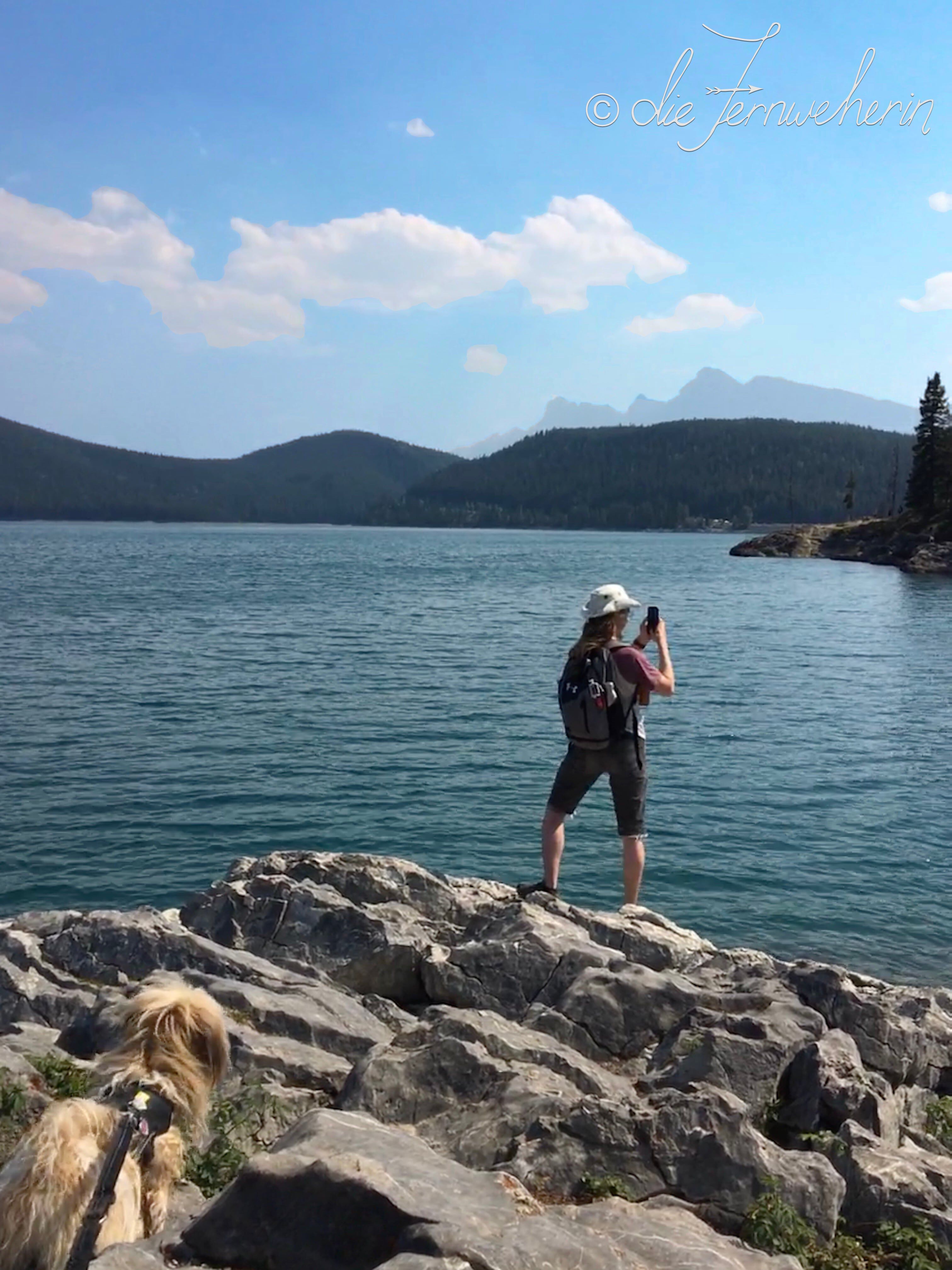
Take nothing but pictures.
Leave nothing but footprints.
It’s not only your safety that you have to look out for. It’s important to keep the area safe for future visitors, and for the animals who call the area home. Stay on the marked trail to prevent damage to the surrounding ecosystem. Remember that whatever you pack in, you must pack out (including all garbage). And never take souvenirs from a natural environment. In short: take nothing but pictures & leave nothing but footprints. For more information, visit Leave No Trace Canada’s website.
<< contents
I hope you have fun (and stay safe) out there on the trails!
Please leave a comment to share your feedback on this post, and/or your own tips & experiences.
Thank you so much for reading!
Happy travels,


